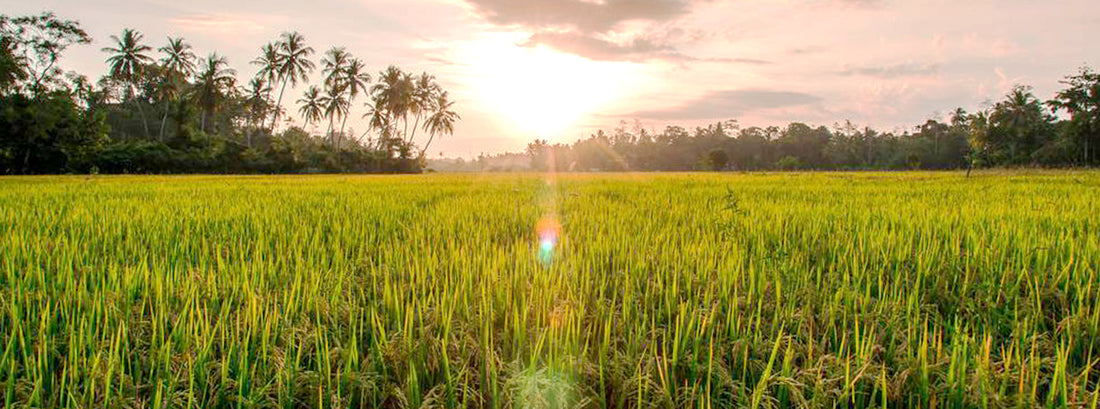
The Paddy Field (Kumbura)
Share
A Kumbura or Ketha is the land on which farmers cultivate paddy. Rice is the staple food of Sri Lanka and as such, paddy cultivation in Sri Lanka is given utmost importance in the agriculture industry. Ancient and traditional farmers were self-sufficient in rice production and ancient Ceylon is said to have been among the foremost paddy exporters in the world.
A Kumbura is a portion of a ‘Kumburuyaya’ or a large paddy tract that belongs to an individual farmer; i.e. the Kumburuyaya is divided into separately owned Kumburu. The paddy tract divides into discernible square areas of land called ‘Liyadi’ where paddy is grown. These are surrounded by ridges known as ‘Niyara’. An opening is made in the Niyara called ‘Vakkada’ which supplies water into the Liyadi. Areas of land, comparatively smaller than Liyadi, known as Kanati are constructed to regulate and manage the water flow into the Kumbura. Two Kanati are located at the two ends of the Kumburuyaya; these portions, called ‘Kurulupaluwa’ are dedicated to birds for feeding. Ancient farmers believed that by providing these feeding grounds to birds, their threat to paddy would be minimized.
There are two types of Kumburu: Godakumburu and Madakumburu.
Godakumburu are cultivated without a permanent water supply, instead paddy is cultivated here with the aid of rain water. These types of Kumburu were not popular among farmers, due to the unpredictability of rainfall. Madakumburu were much more popular as these had a permanent water supply by way of an irrigation tank or stream.
See Sama (Harrowing)
See Sama is the process of harrowing and preparing land prior to paddy cultivation, which is done using a Nagula (plough) and oxen. Once harrowing is complete, paddy seeds are sown or saplings are planted in the ground.
Enriching Soil
No chemicals or toxins were used to enrich the soil of paddy fields. Ancient and traditional farmers used manure, fallen leaves and decayed hay to fertilize their land.
Poru Gama (Leveling)
Poru Gama is the process of leveling the paddy field with the use of oxen and a tool known as the Poruva. Poru Gama is generally done a few weeks after harrowing and fertilizing paddy fields. This process ensures that there is uniform water flow from one Liyadda to another.
Sowing Seeds and Planting Sapling
Following the initial preparation, farmers would elect to either sow paddy seeds or plant sapling.
Weeding
Weeding is chiefly performed by women. Rhymes called ‘Nelum Kavi’ are generally sung together during the process to cast off weariness and boredom.
Safeguarding the Kumbura
A wooden fence called the Danduvata, made by stacking and tying fallen and trimmed tree stems and branches, is set up around the entire Kumburuyaya to prevent wild animals from raiding crop. In addition, a scarecrow (Pambaya) is erected and a Takeya (a rough bell-type object) is hung to scare away birds and tiny animals.
Diseases
Ancient and traditional farmers tilled their land according to the Kanna (period or season) systems, which avoided pest invasion. They also employed organic pest control methods.
Harvesting
Paddy was harvested when they turn light gold in color. Farmers would harvest their crop together while singing ‘Goyam Kavi’. The harvest is temporarily stored in the Kamatha (threshing floor) before it is taken home.
